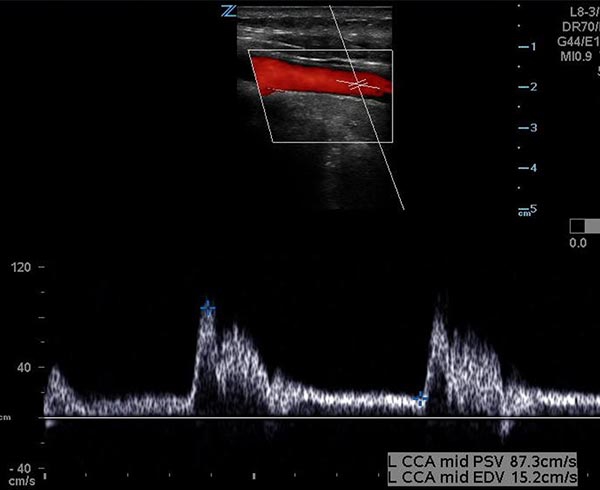This test is usually ordered after a stroke or TIA (transient ischemic attack, or “mini-stroke”). It is also used to help determine overall vascular health, and sometimes ordered before open-heart surgery.
During a vascular ultrasound, sound waves (ultrasound) produce pictures of your blood vessels. These sound waves also reflect off blood cells moving within the blood vessels, allowing the reading physician to calculate their speed. The sound waves are recorded and displayed on a computer screen.
This is a completely painless test that doesn’t have any side effects and doesn’t use radioactivity.
Preparing for your test
You can take all your medications as usual and eat and drink as normal. If you would like to bring someone with you, you’re welcome to bring a friend or relative.
Wear a loose-fitting shirt to allow easy access to your neck. You may be asked to change into a hospital gown. You may be asked to remove all jewelry.
At the appointment
The test will be performed by a sonographer – a medical professional with specialized training in ultrasound. The sonographer not a doctor, which means that any questions you may have about your results will have to wait until you see a specialist physician in clinic.
An ultrasound probe covered by a small amount of gel is placed gently on the neck and will be moved to different positions. This enables us to see images of your arteries and measure blood flow from different angles. During the Carotid Doppler you will hear sounds coming from the machine, which represent blood flow through the arteries in the neck. The test will take approximately 30-40 minutes to complete.
Once the echocardiogram is complete you can get dressed and leave. There aren’t any limitations as to what you can do after the scan so you can carry on as normal. You can drive to and from your appointment.
Your results will be sent to the doctor who requested the test, which may be your family physician, your cardiologist, neurologist, or other specialist physician. You may be given the results of this test during your next family physician or specialist appointment.
